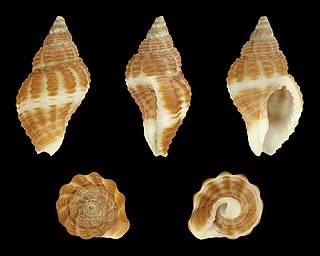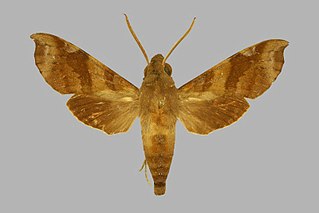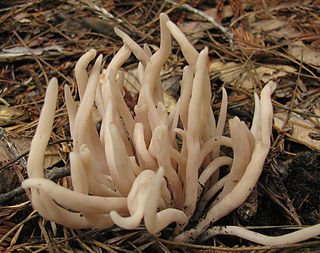
Puffballs are fungi, so named because clouds of brown dust-like spores are emitted when the mature fruitbody bursts or is impacted. Puffballs are in the division Basidiomycota and encompass several genera, including Calvatia, Calbovista and Lycoperdon. True puffballs do not have a visible stalk or stem. The puffballs were previously treated as a taxonomic group called the Gasteromycetes or Gasteromycetidae, but they are now known to be a polyphyletic assemblage.

Convolvulaceae, known commonly as the bindweed or morning glory family, is a family of about 60 genera and more than 1,650 species of mostly herbaceous vines, but also trees, shrubs and herbs, and also including the sweet potato and a few other food tubers.

The Costa Rican swift is a species of swift in the family Apodidae. It was split from the band-rumped swift, Chaetura spinacauda, in 1998.

The smoky white-toothed shrew is a species of mammal in the family Soricidae. It is endemic to Kenya. Its natural habitat is subtropical or tropical moist montane forests. It is threatened by habitat loss.

Peripsocidae is a family of Psocoptera belonging to the suborder Psocomorpha. Members of the family are characterised by their absence of an areola postica in their wings. Many of the recently described genera are closely allied to Peripsocus. The family includes more than 300 species.

Cymbalophora pudica, the discrete chaperon, is a moth of the family Erebidae. The species was first described by Eugenius Johann Christoph Esper in 1784.

Aseptis fumosa is a moth of the family Noctuidae first described by Augustus Radcliffe Grote in 1879. It is widespread in western North America and is known from western Canada, Washington, Nebraska, Colorado, Utah, Arizona, Nevada and California. It occurs in a variety of diverse habitats including coast chaparral, dry conifer forest, and shrub steppe.
Drasteria fumosa, the smoky arches, is a moth of the family Erebidae first described by Strecker in 1898. It is found from the US state of California east to Utah and Texas.

Pollia fumosa, common name : the smoky goblet, is a species of sea snail, a marine gastropod mollusk in the family Pisaniidae.

Temnora fumosa is a moth of the family Sphingidae. It is found in most habitats throughout Africa south of the Sahara.
Bostra fumosa is a species of snout moth in the genus Bostra. It was described by Joseph de Joannis in 1927 and is known from Mozambique.

Clavaria fumosa, commonly known as the smoky clavaria, is a species of coral fungus in the family Clavariaceae. It was originally described by Christian Hendrik Persoon in 1795.

Bjerkandera fumosa is a species of poroid fungus in the family Meruliaceae.

Paragnetina fumosa, the smoky stone, is a species of common stonefly in the family Perlidae. It is found in North America.
Exoprosopa fumosa is a species of bee flies in the family Bombyliidae.

Phimodera is a genus of shield-backed bugs in the family Scutelleridae. There are about 11 described species in Phimodera.
Paravilla fumosa is a species of bee flies.
Kaestneriella is a genus of stout barklice in the family Peripsocidae. There are about 13 described species in Kaestneriella.
Melocosa fumosa is a species of wolf spider in the family Lycosidae. It is found in the United States and Canada.
Allocapnia fumosa is a stonefly in the family Capniidae. It is commonly known as the Smokies snowfly and is found in the Eastern United States, including North Carolina, Tennessee, and Virginia. It is found in the Great Smoky Mountains, and its species name is Latin for "smoky."












